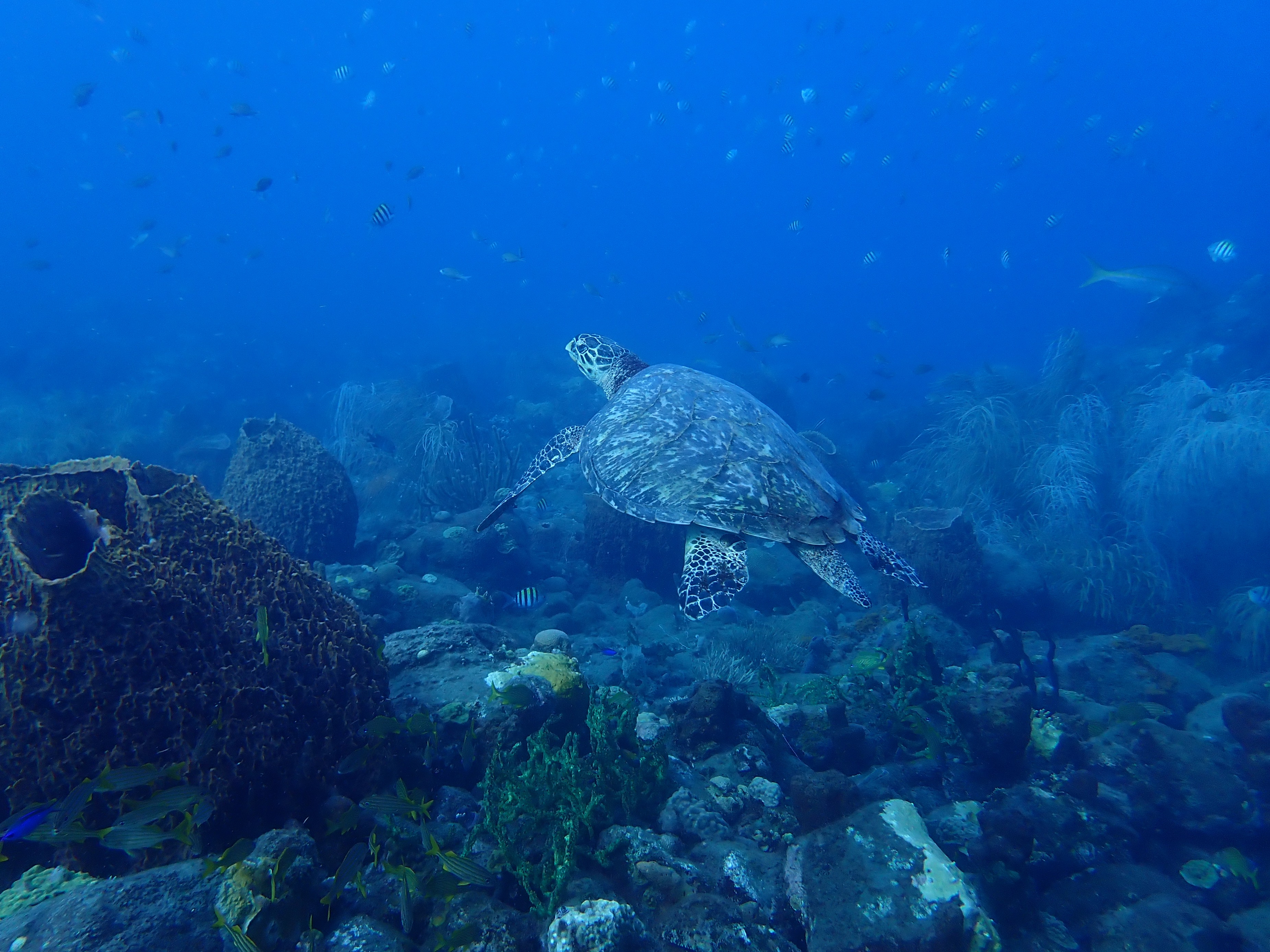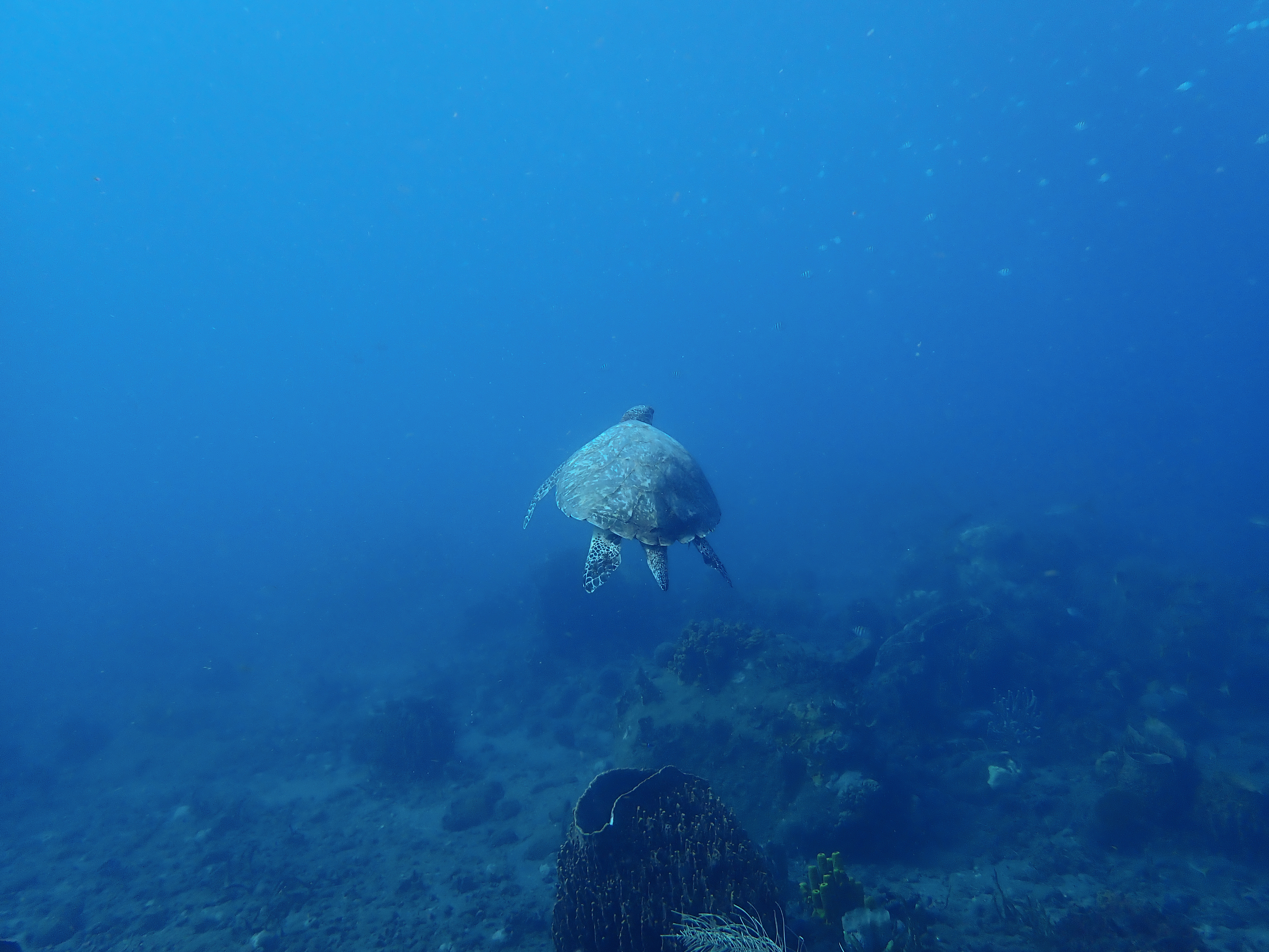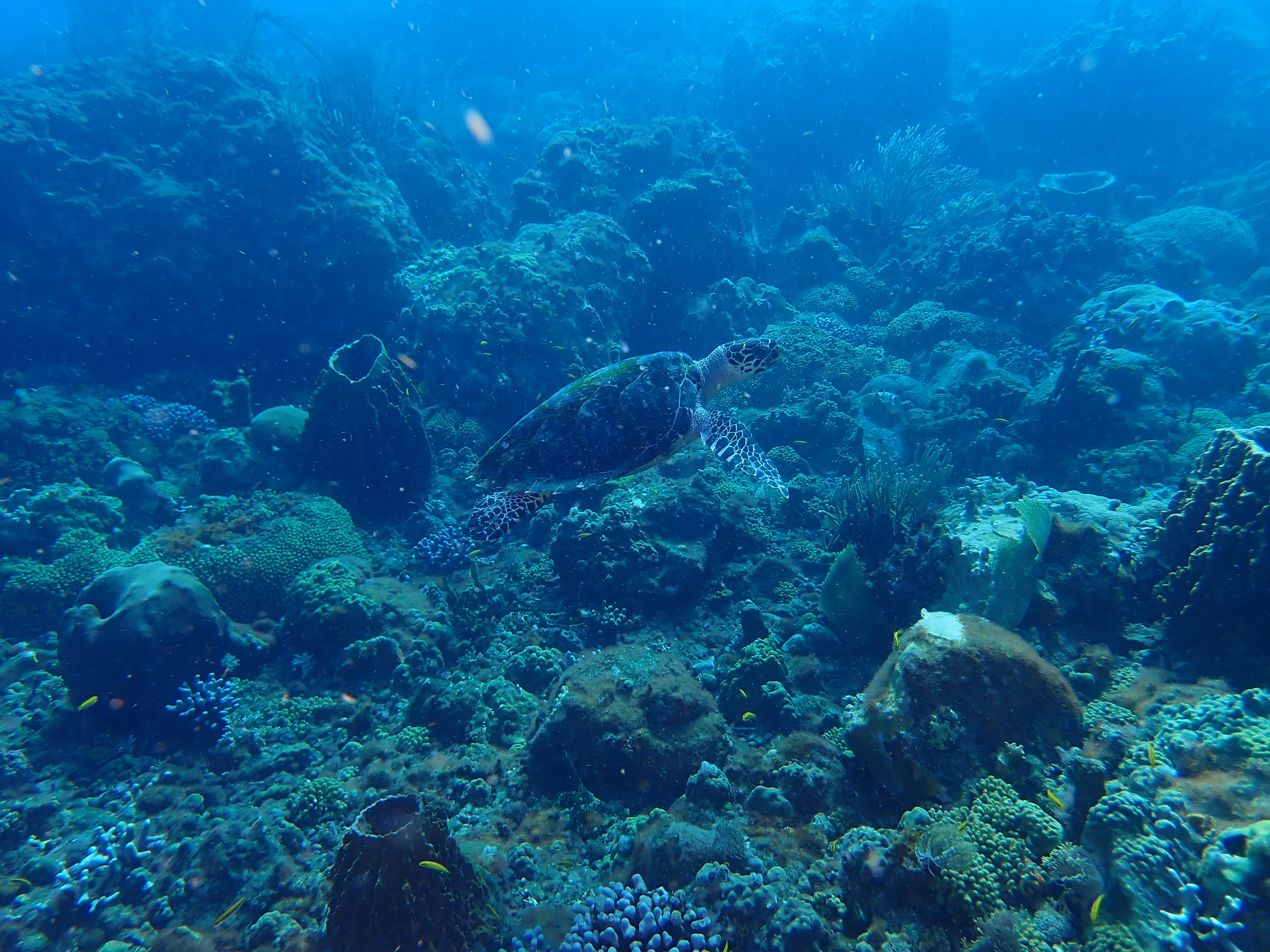> [!summary]- Classification
**Kingdom**:: [Animalia](Animalia.md)
**Phylum**:: Chordata
**Subphylum**:: Vertebrata
**Superclass**::
**Class**:: Reptilian
**Subclass**::
**Superorder**::
**Order**:: Testudine
**Suborder**:: Cryptodira
**Superfamily**::
**Family**:: Cheloniidae
**Subfamily**::
**Genus**:: Eretmochelys
**Species**:: E. imbricata
**Vernacular**:: Hawksbill sea turtle
## Photos

*[112 - 2023-02-27 - Pointe Lamarre - Saint Pierre - Martinique](112%20-%202023-02-27%20-%20Pointe%20Lamarre%20-%20Saint%20Pierre%20-%20Martinique.md) - One of my favorite picture for this journey!*

*[112 - 2023-02-27 - Pointe Lamarre - Saint Pierre - Martinique](112%20-%202023-02-27%20-%20Pointe%20Lamarre%20-%20Saint%20Pierre%20-%20Martinique.md) - From its back, we can see that it's a male (the tail), as well as the shape of its shell.*

*[116 - 2023-03-01 - Sources chaudes - Saint Pierre - Martinique](116%20-%202023-03-01%20-%20Sources%20chaudes%20-%20Saint%20Pierre%20-%20Martinique.md) - Another smaller individual. It was just eating somes sponges under the boat!*
## Notes
Those turtle are identified using the shapes and kind of drawing that are on their shell. These are unique just like our fingerprints and can be use as an identification key of an individual. In Martinique, there's some scientists that gives them a name so they can track the lifecycle of each individual.
When they reach their adult cycle, they start moving from the littoral to the middle of the ocean in order to find a partner. It will come back years after living on the same beach they was born, in order to lay their eggs.
We can identify these turtle among other from the same genus by watching the beak. Hawksbill sea turtle actualy have one that is use to break sponges and to eat it.
## References
- https://doris.ffessm.fr/Especes/Eretmochelys-imbricata-Tortue-imbriquee-504